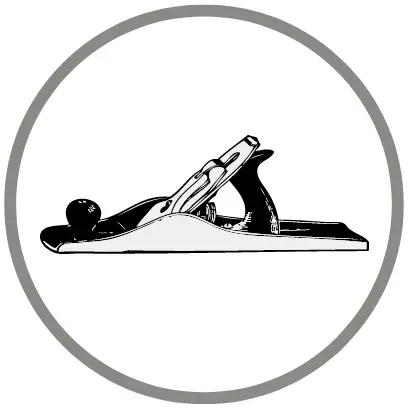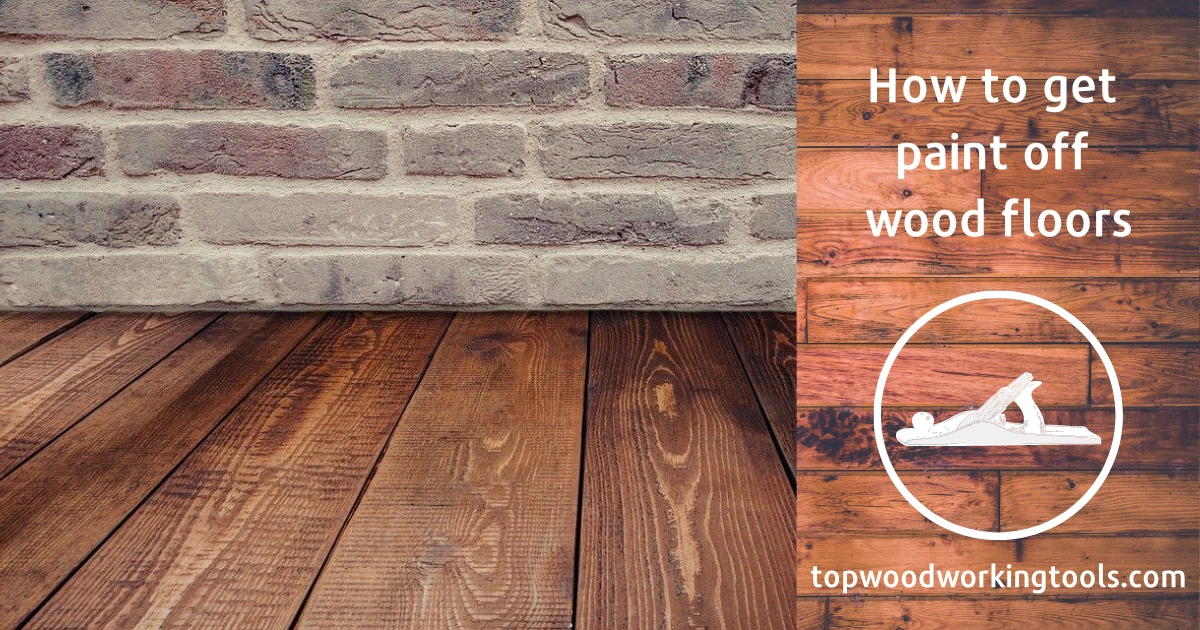Removing old paint from wood is quite time-consuming, but it always contributes to the quality and durability of the new paint. Original paint layers can be removed mechanically or chemically. If you encounter problems when repairing an old wooden floor, we can advise you on how to remove oil-based paint from wood floors.
With the proper equipment, this is possible. There are a lot of sanders available for restoring old wood floors. But not every one of them is suitable for every job. We will advise you on how to achieve the perfect result. So, how to get paint off wood floors?
We remove oil-based paint from hardwood floors wood for several reasons. For example, we want to leave the original color and surface texture of the solid wood on the restored furniture to make it stand out.
Contents
- 1 Tired of the old paint on your floor? Here are the most popular lifehacks, how to get paint off wood floors
- 2 Types of wooden floors
- 3 You need a sanding machine
- 4 Procedure
- 5 The Alternative
- 6 Using vibratory sander
- 7 Eccentric Sander
- 8 Angle grinder and drill
- 9 Mechanical cleaning
- 10 Manual removal
- 11 Using mechanical cleaner
- 12 Chemical Methods
- 13 Paint stain
- 14 Using the paint thinner
- 15 Chemicals
- 16 Hot flame and air
- 17 Job Safety
- 18 Good quality products – a guarantee of safety at work
- 19 Conclusion
Tired of the old paint on your floor? Here are the most popular lifehacks, how to get paint off wood floors
In this case, the perfect removal of the original layers of paint and varnish from various pieces of furniture or doors is most easily achieved by leaching.
You can also leach by yourself, but this is quite dangerous and illegal in some cases (unless you have made provision for the regulatory disposal of chemical waste), so it is worth finding a professional leaching shop and having the paint professionally removed from the item you are restoring.
You will get perfectly cleaned wood, which can then be painted, varnished, or waxed as you see fit.
Types of wooden floors
Old hardwood floors, most often spruce, but also other softwoods used to be painted with nitro lacquer, but also with classic enamel paint. And because it lost its charm after a while, it was usually repainted again and again. This created a thick layer on the boards that even many sanders have trouble removing. Flooring type determines how to get paint off wood floors.
Wood floor coverings are classified according to the material used or how they are attached to the substrate.
Solid wood flooring – boards
You’ve probably already seen a traditional hard wood floor, perhaps during a tour of an old log home or castle. Due to its unique properties, hardwood floors have recently been appearing more and more in modern interiors. Solid wood floors are durable, well insulated, durable, and easily refinished (sanding, refinishing).
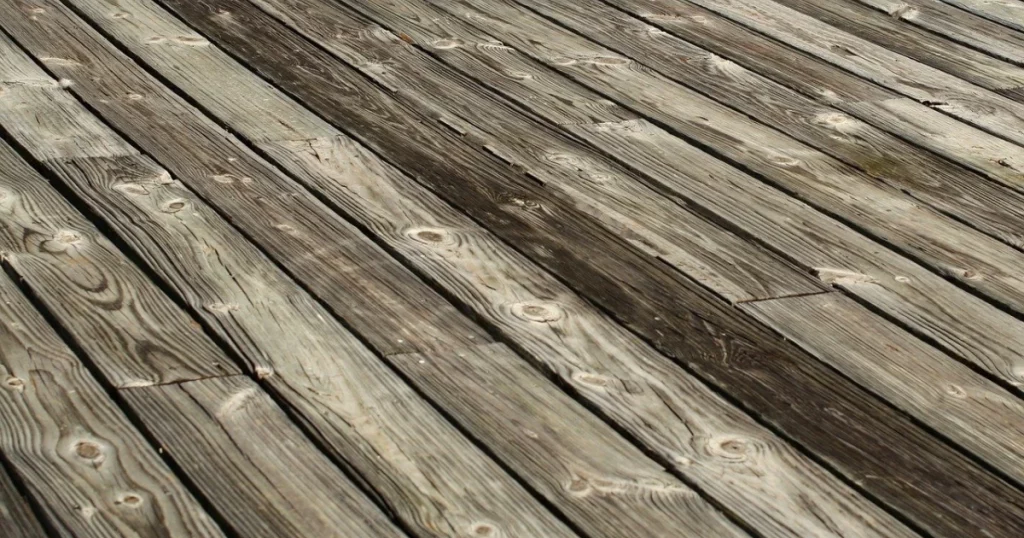
Wooden plank flooring
Installing solid wood planks is relatively simple. Simply put, the individual boards are laid side by side and screwed or nailed to what are called floor joists. When laying a solid wood floor, it is necessary to use sufficiently dry planks and to follow the technological sequence (e.g. evenness of the subfloor).
At the same time, you have to consider that the wood will work, and that solid wood floors are more susceptible to changes in temperature or humidity.
Wood parquet
The traditional use of wood as flooring includes hardwood floors, which are considered a luxury solution. They can be found in older homes, but increasingly they are showing up in new construction.
If your priority is a wood floor that will last a long time, wood parquet is the way to go. It’s said to be a hardwood floor that lasts a lifetime and lasts longer than hardwood floors. Ease of maintenance and the ability to quickly upgrade also speaks in favor of wood hardwood floors.
Parquet is considered an environmentally friendly flooring. It is made from domestic wood, but you can also buy parquet from more exotic woods (e.g. American walnut, Brazilian cherry, teak, etc.). Hardwood floors can be used in natural colors, and there is also a variety of parquet varnishes to choose from. The disadvantage of this type of flooring is the higher price.
Veneered wood flooring
If you like wood floor parquet flooring but can’t afford to buy it, there is another – cheaper – option. Less wood is used to produce veneered wood floors, so their price is lower. As with wood floors, there are many designs and styles to choose from.
The advantage of veneer wood floors is that they are easy to maintain. On the other hand, because of the wood’s fragile layer, it cannot be refinished by sanding. In addition, the wood floor is more sensitive to mechanical damage and less tolerant of changes in heat and humidity.
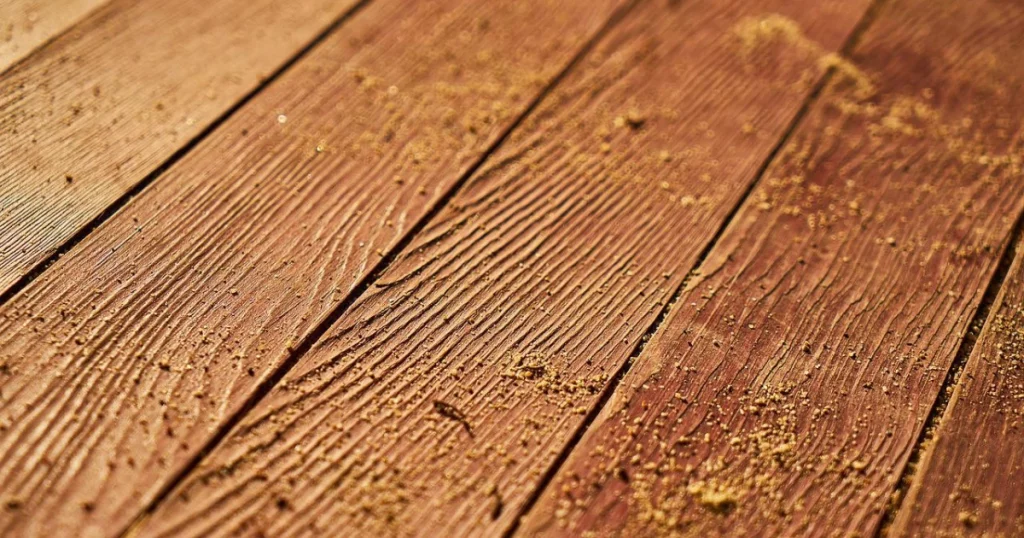
You need a sanding machine
For successful latex paint stripping, you need a sander that has high power, surface area, and most importantly, a platen roller that knocks the stripped material off the sanding belt as it rotates. The sander should be equipped with a material collection bag. These are usually the largest sanders that two sturdy men can carry.
Usually, such a tool is not available in your workshop, you will have to find a rental shop where you can borrow it for reasonable money. But the results are worth it. If you use the wrong sander, you will quickly realize this by the fact that the sandpaper is immediately clogged and there is no way to clean the latex paint off the floor.
Since you can’t get to the edges with a sander, you have to sand these parts with a regular angle grinder with sanding discs. The work requires a lot of effort, but there is no other way out.
Procedure
First, you must hammer all the nail heads a few millimeters below the level of the current floor. Otherwise, the nails will damage not only the tool, but also the roller, and you will pay for it. For the sanding itself, you need to use a quality machine, as well as sanding rollers of the right coarseness. Start with a grit of 40, then go from 60 to 80 and finish at 100 or 120.
If you use coarser paper, you can also expect to level the floor with it. Final sanding, on the other hand, gives the floor a quality surface. The machine usually works on the longer side of the room.
Care must be taken when lowering and raising the sanding roller to avoid making unwanted grooves on the floor. For particularly heavily varnished floors, it is sometimes advisable to start diagonally and remove paint with a hardened point.
The Alternative
Sometimes it can be hard to find the right sander. If the area is smaller, you can try cleaning everything with a large manual angle grinder. The result probably won’t be perfect, but it can serve as a starting point.
Another option is to first remove the latex paint with a heat gun and trowel. But since you will be working indoors, you should take care of good ventilation. A floor cleaned of layers of paint will be easier to sand. You can also use an electric planer in small areas.
What about small areas?
For small objects and areas with peeling latex paint, sandpaper or a wire brush is fine. Especially if you want to repaint them with topcoat paint stain and therefore do not need to perfectly restore the original structure of the wood. You can sand by hand with sandpaper attached to a pad with rounded corners (so the paper doesn’t peel off), or with a sanding sponge.
Rough sanding is done with paper grit 40-120, and finish sanding is done with paper grit 180-320. However, it is tedious and requires great physical effort. It is more convenient to get an electric sander.
Using vibratory sander
Sander can also go into corners, and an eccentric (rotary) sander is suitable for rounded surfaces. In both cases, it’s best to use a machine with suction; get a perforated paper for that. But you can also use a bench top disc or belt sander with sanding belts.
Even in the case of vibratory sanders, it is possible to work with belts of different grit sizes, which are usually clamped with a quick-release spring system or with Velcro fasteners. Different types of sanding machines require the appropriate types of sanding belts. Suction machines use perforated belts.
Eccentric Sander
Another option is an eccentric sander, for example, which grinds simultaneously with an oscillating and rotating motion. Likewise, it is suitable for sanding rounded and spherical objects and surfaces. It allows for a fuller finish without the marks of the grinding wheel
It is important to consider that it has a higher material removal rate and does not hit corners. For these, it is better to use a vibratory sander. An alternative between the two types of grinders mentioned above is the so-called delta grinder, so named because of the shape of the plate.
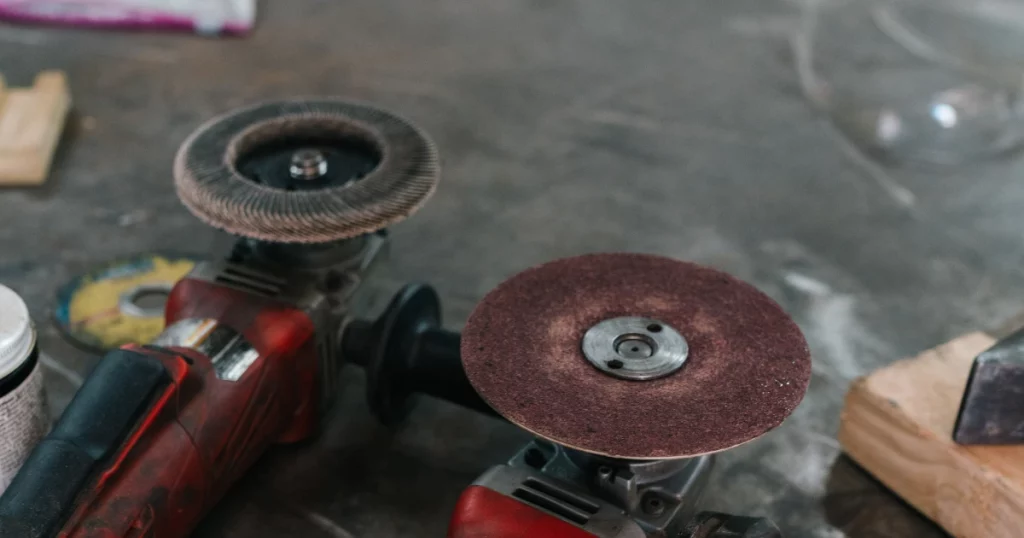
Angle grinder and drill
An angle grinder with an appropriate type of disc, or a regular drill with a sanding pad, or a wood sander with a sanding attachment can also come in handy. When working with a drill, take care not to put too much pressure on the base.
The drill is more suitable for coarser sanding, but with a little practice, it can do a lot of useful work. However, dusty sanding is unfavorable to the drill, so it is not suitable for long-term use for paint stain removal.
You can also install sanding fleeces or wire brushes on an angle sander. You can also work the corners with a multifunction sander. However, the choice of tool always depends mainly on the size and shape of the object to be sanded.
Mechanical cleaning
The most traditional way to get rid of old paintwork is mechanical removal. Suitable tools are sandpaper or a wire brush. For large areas of cleaning, a vibratory sander, which can be purchased relatively inexpensively, is ideal. You need to choose the right sanding paper for the sander, depending on the thickness of the surface to be removed.
It is used for sanding flat and especially large surfaces. Where the entire machine cannot reach, the coating residue must be cleaned by hand using a scraper or separately used sandpaper. A suitable wire brush can also be found commercially for removing old paint.
Manual removal
Hand brushes come in different sizes and widths, if you are using them as an additional tool to your vibratory sander, choose, for example, a double-row one that will penetrate every forgotten crevice. The force applied can be easily adjusted, avoiding unnecessary damage to the wood.
Using mechanical cleaner
On the other hand, for really hard-to-remove coatings, such as latex paints and latex-based coatings, you should choose a fairly rough mechanical cleaner. Wire discs, which are available in a variety of mutations, thicknesses, and designs, can also be used for these cases.
They are mounted on a drill and are designed primarily for cleaning steel structures. Therefore, they are very unfriendly to wood and should only be used as a last resort. With all mechanical cleaning methods, you need to think about the amount of dust that is generated during sanding.
Chemical Methods
It is now in late summer, when there is often little cloudy weather, that conditions are suitable for the use of removers. In the sun and in the heat, the volatile substances reduce their effectiveness.
If the remover also contains waxes, paint evaporation slows down. However, this product is not suitable for absorbent materials, where waxes are difficult to remove, and new paint does not adhere well.
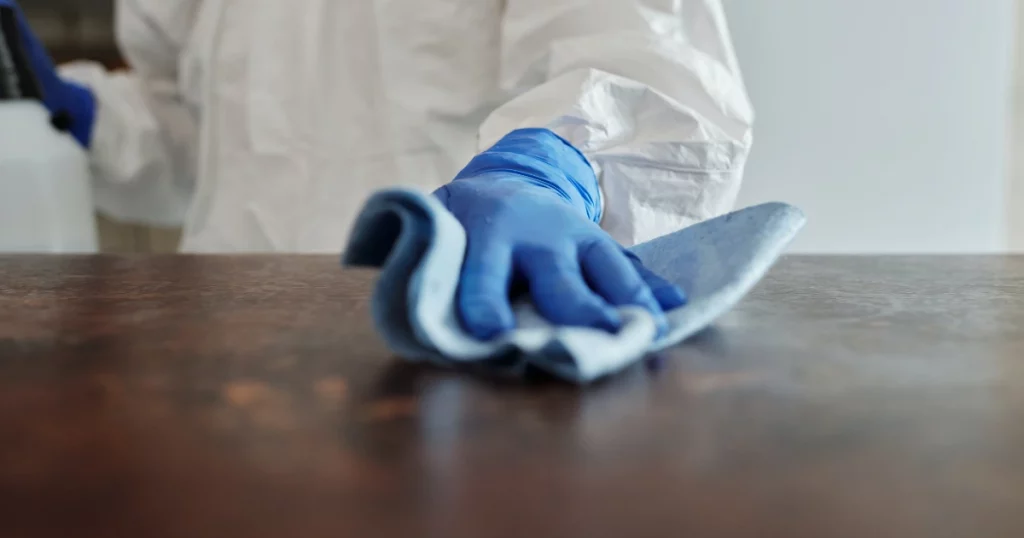
Paint stain
Apply the paint stain over the old paint. Latex paint with a long pile is best. The layer should stay wet, so you can wrap the object in plastic wrap or a bag. With some removers, it is enough to wait 15-45 minutes, while others require many hours (you will find the necessary information on the package of the product you use).
The coating will swell and can be scraped off with a scraper. Finish by rinsing the surface with a solvent. Using paint thinner is the best way to paint off wooden floor.
What is leaching?
A more expensive chemical option is leaching. Leaching at home is quite difficult and not entirely safe, so you will have to take the item to a leaching shop. However, for the price of higher investment, you get perfectly cleaned material, and this is true even for large areas.
We recommend using paint thinner only when you are confident that it will not damage, for example, historical furniture or a valuable piece of wood. Chemical solvents are applied with a brush, in a fairly thick layer.
Using the paint thinner
The specific use of each chemical paint thinner is described on the product label. Generally, chemical solvents are applied thickly with a brush or paint thinner. The duration depends on the type of stripper, usually about 15-30 minutes.
After the chemical treatment, the wood must be cleaned. Use paint thinner for it. The amount depends on the particular piece of wood, its age, and the choice of stripper.
It is most convenient to work with products that have enough water and a brush to finish cleaning the wood. More often than not, ordinary synthetic and oil-based paints are disposed of with paint-stripping chemicals.
Chemicals
Chemicals are commonly used by professional restorers to remove old paint stain and varnish on wood. Guessing the right product is an art. However, you can consult such experts, for example, at a paint store.
What kinds of chemicals are available?
These products, usually sold in liquid or gel consistency, can penetrate and etch the old paint, causing it to swell. Most chemical strippers can handle synthetic as well as epoxy or dispersion coatings. Follow the directions for each product, but most of the time, the strippers are spread over a layer of old paint and left on for the prescribed amount of time.
The disturbed layer of paint is removed with a scraper, the treated areas are then washed and sanded. It is often necessary to apply the product several times, a rather laborious route with uncertain results. And if the chemistry doesn’t remove the old paint residue sufficiently, you can always go back to tanning and sanding.
Hot flame and air
When removing thick layers, hot air or a flame is very effective. Electric heat guns or gas burners on a cartridge or connected to a propane-butane tank are used for this. The electric gun is gentler and easier to control the air temperature, but you can also get used to an efficient and fast flame torch.
How does hot air affect paint integrity?
Hot air (180-650 °C/356-1202 °F) easily destroys the integrity of the paint, which is then removed with a trowel or special paint remover. It is necessary to work carefully, as the surface texture of the wood is easily damaged by the scraper blade and the heat of tanning and scraping.
Keep in mind that even a perfectly tanned surface will have to be sanded, or various other methods of removing varnish in joints or right corners, where hot air is usually insufficient.
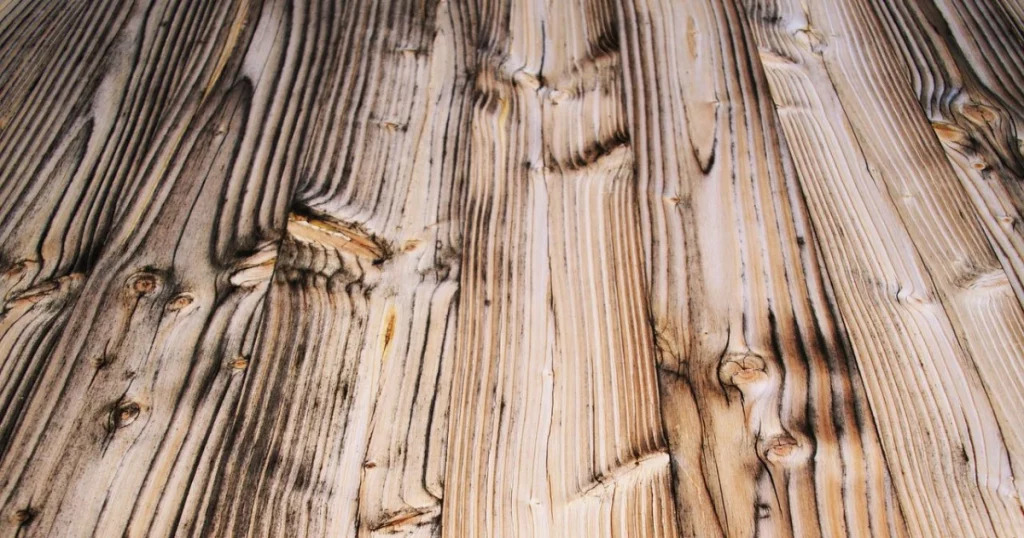
Hot air guns
Hot air guns can be used to remove both synthetic and water-based paints. When removing old paint from windows or doors, you have to be careful with window panes, which can crack when exposed to high temperatures.
To do this, the gun usually comes with a glass protection nozzle that directs a stream of warm air. Removing old paint by tanning is especially useful for flat surfaces with a minimum of plastic protrusions.
Heat guns efficiency
In the last few years, heat guns have come to the fore when discussing the removal of old paint. They conveniently replace the classic petrol torch lamps, the use of which brought several complications for the user.
In contrast, hot air guns are ideal because of their temperature control, which also makes them gentler on the wood being repaired. The lowest temperatures of around 180 °C/356 °F can already remove synthetic oil paints and varnishes without any problem.
Using high temperature
Use higher temperatures to remove latex, acrylic, and polyurethane paints, but always test beforehand and start at lower temperatures. Often the dried paint is overcoated, and it is therefore impossible to determine exactly how many degrees to remove the paint.
Removing with a flame or hot air is especially useful for thick layers. Use a heat gun or gas torch for this. The heat will soften and decompose the paint spills, so you can just scrape it off completely. Then simply sand the surface with finer grit paper (180-400) and remove paint.
Removal by flame
However, care must be taken not to destroy the substrate – so this method is more suitable for flat wood without projections than for metals (definitely don’t use this method for thin sheet metal or metals that melt at lower temperatures, such as tin).
There is also a risk of glass cracking from burning window frames, so always protect it from the flame with plywood, for example. Sometimes it’s difficult to paint off hardwood floor.
Job Safety
All paint removal methods can be harmful to your health. Whether it’s fumes, toxic dust, or crumbling hot paint residue. So, use protective equipment like gloves, safety glasses, and a respirator or face shield. Remember to wear long sleeves and pants, and make sure the room you are working in is well-ventilated.
Main safety points
A construction site is a dangerous place to work, and construction workers perform their professional duties at great heights and under difficult conditions every day. Therefore, there is a significant risk of injury. Another problem is related to dangerous tools and materials that increase the risk of falls, injuries, and even permanent health damage.
Equipment
Neither the workers nor the construction manager can foresee accidents, which is why it is so important to follow all safety rules. The equipment chosen for the job plays a key role, as a stable ladder and other accessories are really a guarantee of fast painting and safety.
What should you keep in mind when working as a painter, and what are the warning signs to pay special attention to?
What can happen?
Problems can occur when paint drops get into the eyes, which can even lead to permanent eye damage. Harmful components are a particular hazard when using solvent-based or oil-based paints. Vapors emitted by paint are also a significant problem that can cause occupational disease over the years.
Solvent and other substances
When contact with solvent and other harmful substances in a painter’s job occurs frequently, that is, for at least several hours each day, the risk of contamination definitely increases, with potentially very dangerous side effects.
Proper room ventilation is important for safety. One of the best ways to get rid of unpleasant smells and strong fumes is to open some windows. If there is a drought, you should avoid inhaling harmful substances all the time.
However, this is not the only way to prevent illnesses and ailments related to the nature of the work. It is very important to use appropriate facial protection equipment. In particular, respirators, which work well with absorbents.
Working with water-based paints
This solution is most recommended for organic solvents, but it can also be used with other types of paints for maximum safety. Water-based paints do not require such sealed equipment, so a P1 class filter respirator will do just fine.
All of the above equipment, clothing, and accessories can be purchased from construction vendors and health and safety equipment stores.
Consequences of using substandard equipment
Health and safety regulations clearly state that workers should use quality tools and equipment, as this is the only way to avoid accidents and injuries. Unfortunately, this is not the case on many construction sites or in homes to be renovated.
Check the equipment integrity
To avoid accidents and dangerous situations, you should always check the condition of the boards. Quality material has the optimum thickness and length so that you can walk on the scaffolding without fearing for your life and health.
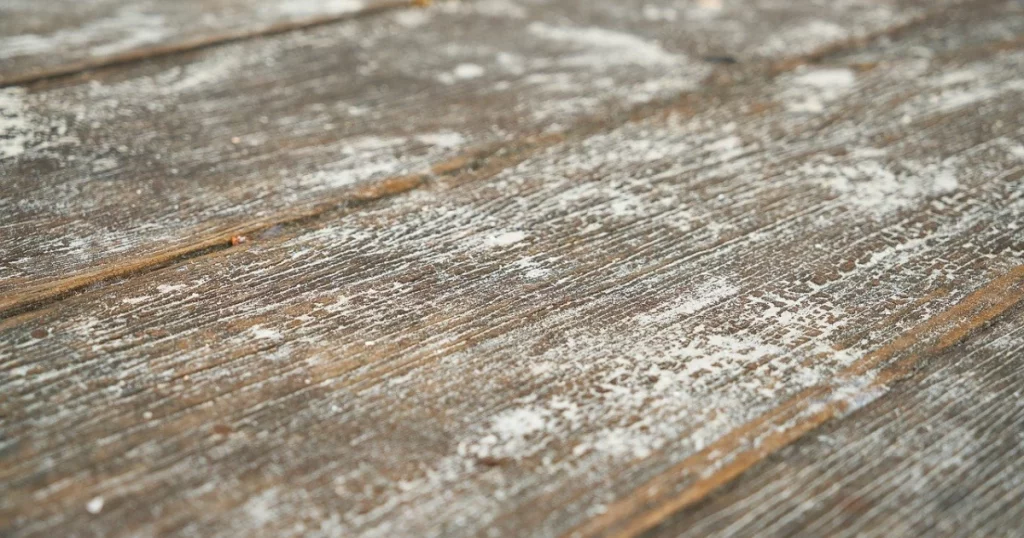
Good quality products – a guarantee of safety at work
Only high-quality products that do not have a negative effect on health should be used in the work process. For this reason, it is recommended to choose only quality substances that meet the highest standards. These are products of natural composition, containing a relatively small number of solvents and harmful to health plasticizers.
Health-safe substances for hardwood floors are very important because people are in contact with them for several hours a day, at least five days a week. Breathing in harmful fumes not only makes them feel worse but can also cause serious illnesses.
Conclusion
Unfortunately, none of the above methods of removing paint from a wood floor is ideal. In some cases, they may not even work, and you will have to remove the floor base completely in order to refinish the floorboards. However, you should still try all of the above methods before proceeding with these drastic measures.

My name is Alex Mashinsky
I am an enthusiastic woodworking hobbyist who created topwoodworkingtools.com to provide helpful information and advice to fellow woodworkers.
The goal of the website is to help readers make informed decisions about woodworking tools and materials, with the ultimate aim of ensuring that they achieve the best possible results from their projects.
My main focus is on offering accurate, honest, and well-reasoned opinions and advice to help readers choose the most suitable tools and materials for their particular needs.
